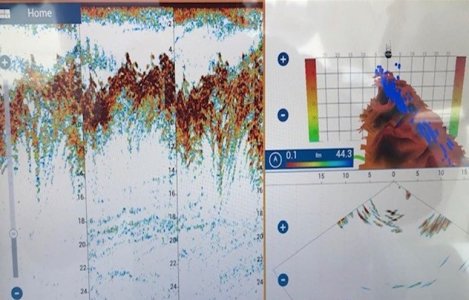hello, I'm curious if anyone uses the dff3d sidescan to locate tuna? On the west coast we get bft tuna up to 300lbs and often there are no surface signals to let us know they are there...we often fish in the dark for them as well...so we depend on our electronics to locate them. I use b175hw and it works well but I have to practically run right over them. The larger sportfishing boats have a "radar" type furuno sonars which can locate schools of tuna couple hundred yards away in 360 degrees. Very impressive sonars but they are 30k and not practical for the recreational boater in his 23 boat. 
I thought perhaps the DFF3d to locate tuna off to the side could be the next best thing other than spending 30k for 360 degrees. However, my boat is set up with simrad so if I was going to jump to the DFF3d I would need to spend probably 6k for mfd, control box, and transducer. I'm just wondering if that 6k is worth it or not....
Thanks in advance
I thought perhaps the DFF3d to locate tuna off to the side could be the next best thing other than spending 30k for 360 degrees. However, my boat is set up with simrad so if I was going to jump to the DFF3d I would need to spend probably 6k for mfd, control box, and transducer. I'm just wondering if that 6k is worth it or not....
Thanks in advance



